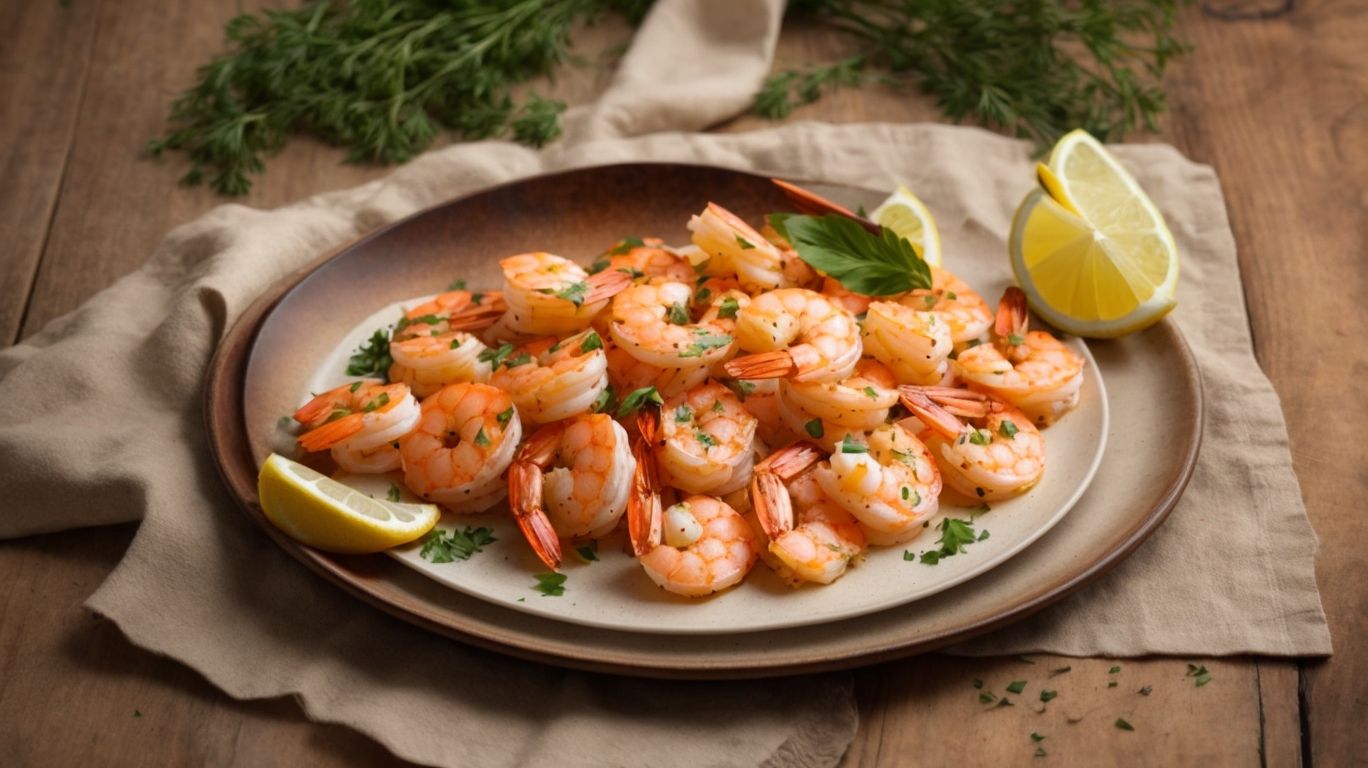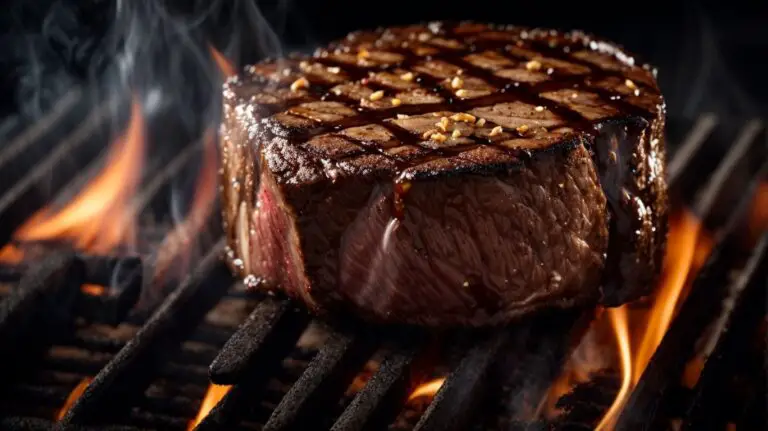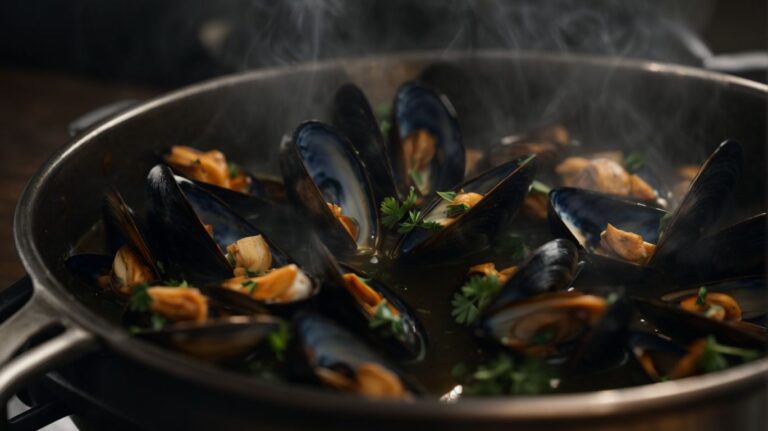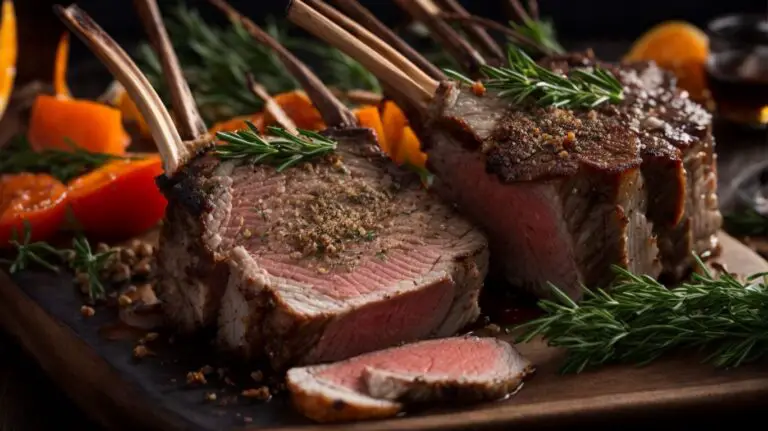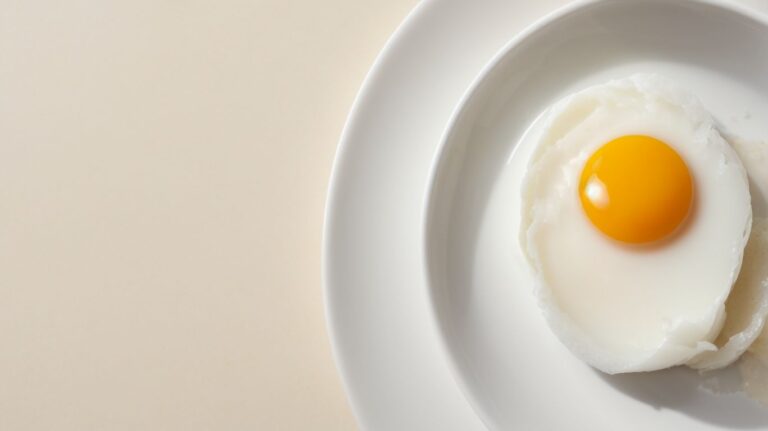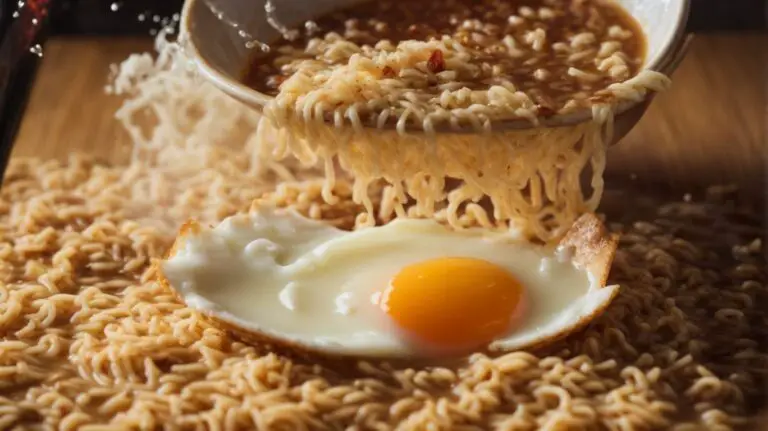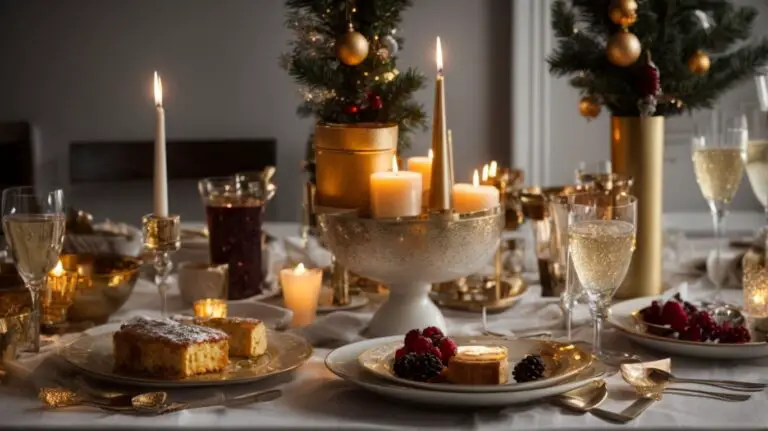How to Cook Shrimp After Boiling?
Welcome to the ultimate guide on cooking shrimp!
We cover everything you need to know about preparing, boiling, cooking, and storing shrimp.
Learn about the different types of shrimp and master the art of seasoning and cooking them to perfection.
Whether you’re a beginner in the kitchen or a seasoned chef, these tips and tricks will help you create delicious shrimp dishes that will impress your family and friends. Let’s get started!
Key Takeaways:
What is Shrimp?
Shrimp, a versatile seafood delicacy popular in various cuisines worldwide, is a small, decapod crustacean with a delicate yet distinctive flavor.
Known for their sweet and slightly briny taste, shrimp can be prepared in countless ways, such as grilled, sautéed, fried, or steamed, making them a favorite ingredient in dishes ranging from stir-fries to pasta.
Shrimp are not only cherished for their flavor but also valued for their lean protein content and low calorie count, making them a healthy choice for many diets.
From traditional shrimp scampi in Italian cuisine to spicy shrimp curry in Indian dishes, these versatile crustaceans have cemented their place on global culinary maps.
What Are the Different Types of Shrimp?
Shrimp come in various types, including Jumbo Key West Pinks, Biloxi Shrimp, and other varieties known for their size, taste, and texture.
Jumbo Key West Pinks are prized for their large size, sweet flavor, and firm texture, making them perfect for grilling or adding to pasta dishes.
- Biloxi Shrimp, on the other hand, are smaller but pack a flavorful punch, ideal for dishes like shrimp scampi or tempura.
- Regional distinctions play a role too–Gulf Coast shrimp are known for their briny sweetness, while shrimp from the Pacific Northwest tend to be more delicate in flavor.
Exploring the diverse world of shrimp opens up a realm of culinary possibilities and taste experiences. Each type offers its own unique qualities that can elevate any dish they are used in.
How to Boil Shrimp?
Boiling shrimp is a simple yet crucial cooking method that preserves the natural sweetness and tenderness of the seafood while infusing it with flavorful elements like Old Bay seasoning and zesty cocktail sauce.
When preparing to boil shrimp, start by choosing fresh, high-quality shrimp. Whether you opt for large tiger shrimp or smaller varieties, ensure they are deveined and shell-on for maximum flavor retention.
To start the boiling process, fill a large pot with water and bring it to a rolling boil. Add salt to the water to enhance the natural flavors of the shrimp. You can also incorporate aromatics like garlic cloves, lemon slices, or bay leaves for an extra layer of taste. Once the water is seasoned, gently add the shrimp and reduce the heat to a simmer.
What Are the Ingredients Needed?
To boil shrimp, essential ingredients such as water, beer, garlic salt, black pepper, and fragrant bay leaves are typically used to enhance the seafood’s natural flavors and aromas.
Water acts as the base for boiling the shrimp, ensuring they cook evenly and retain moisture.
Beer adds a subtle depth and richness to the dish, infusing a unique flavor.
Garlic salt contributes a savory element, while black pepper brings a hint of heat and complexity.
Fragrant bay leaves impart a floral and herbal note, elevating the overall aroma and taste of the shrimp.
What Are the Steps to Boil Shrimp?
The process of boiling shrimp involves steps such as preparing the cooking liquid, adding the shrimp, simmering until cooked, and optionally serving as peel-and-eat shrimp for a hands-on dining experience.
A crucial step in preparing the cooking liquid for boiling shrimp is infusing it with flavors like Old Bay seasoning, garlic, lemon wedges, and bay leaves. These ingredients not only enhance the taste of the shrimp but also create an aromatic base during cooking.
Once the cooking liquid is seasoned to perfection, bring it to a gentle simmer to allow the flavors to meld together. Now, gently drop the fresh or thawed shrimp into the simmering liquid, ensuring they are submerged for even cooking.
How to Cook Shrimp After Boiling?
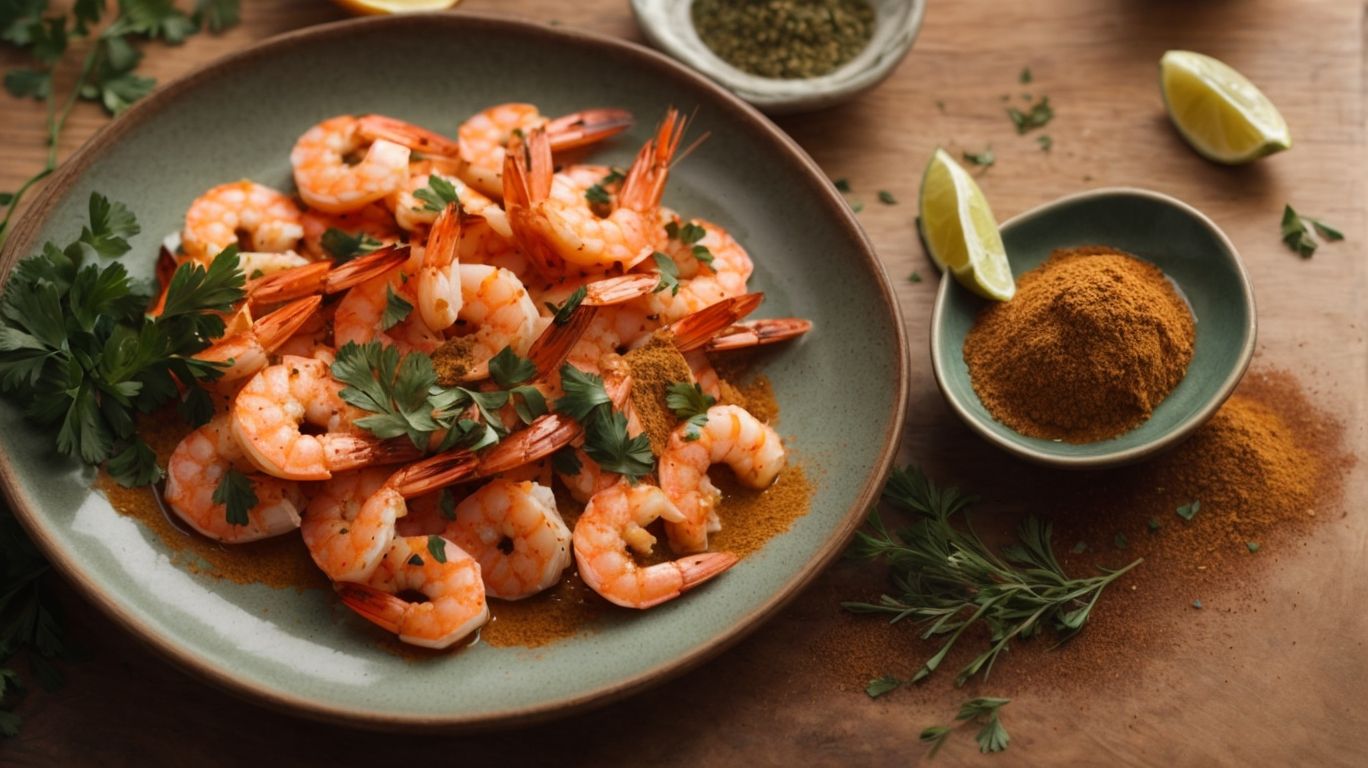
Credits: Poormet.Com – Keith Gonzalez
Cooking shrimp after boiling opens up a world of culinary possibilities, allowing for grilling, sautéing, or incorporating the seafood into diverse recipes based on personal preferences and flavor profiles.
Grilling shrimp can impart a lovely smoky flavor, especially when marinated in a mixture of olive oil, garlic, and fresh herbs. Ensure medium-high heat and grill the shrimp for about 2-3 minutes on each side, depending on the size, until they turn pink and slightly charred.
Sautéing shrimp in a hot skillet with butter or olive oil is a quick and delicious option. Cook them for just 1-2 minutes per side until opaque and curled. Season with a pinch of salt, some cracked black pepper, and a squeeze of lemon juice for a burst of freshness.
Employing the right seasonings can elevate the flavor of shrimp significantly. Whether it’s a Cajun spice blend for a kick of heat or a citrusy marinade for a tangy twist, seasoning is key to enhancing the natural sweetness of the shrimp.
What Are the Different Cooking Methods?
Shrimp can be cooked after boiling using methods like grilling, sautéing, or marinating in flavorful horseradish sauce, each technique imparting a unique taste and texture to the seafood.
Grilling the post-boiled shrimp adds a delightful smoky flavor while maintaining a juicy interior.
Sautéing the shrimp with garlic and butter creates a savory dish with a crispy exterior.
Marinating the shrimp in a horseradish sauce infuses a bold and zesty kick that complements the natural sweetness of the seafood, providing a vibrant flavor profile.
To enhance these methods further, consider experimenting with different spice blends, herbs, or citrus juices to elevate the taste and presentation of each dish.
What Are the Best Ways to Season Shrimp?
Seasoning shrimp after boiling can be done using iconic blends like Old Bay and Lawry’s, infusing the seafood with Maryland-inspired flavors and aromatic seasonings for a delectable dining experience.
Old Bay, a staple in Chesapeake Bay cuisine, brings a spicy kick alongside notes of celery salt and paprika, creating a bold and zesty flavor profile that complements the natural sweetness of shrimp.
On the other hand, Lawry’s famous seasoned salt adds a savory blend of garlic, onion, and herbs, enhancing the umami taste of the boiled shrimp.
Incorporating these regional influences and time-tested traditions into your cooking elevates the dish’s richness and appeal, making each bite a delightful burst of flavor.
What Are the Recommended Cooking Times for Different Shrimp Sizes?
Different shrimp sizes require varying cooking times, with larger varieties like Jumbo Key West Pinks needing longer durations compared to smaller shrimp such as the US Navy variety for optimal doneness and texture.
For example, when cooking Jumbo Key West Pinks that are typically around 10-15 count per pound, it’s recommended to grill them for about 5-7 minutes per side to ensure they are cooked through without becoming tough. On the other hand, smaller shrimp like the US Navy variety, which are usually around 41-50 count per pound, require a shorter cooking time of approximately 2-3 minutes per side to maintain their delicate and juicy texture.
Remember, adjusting the cooking times based on the size of the shrimp is crucial to avoid undercooking or overcooking. Properly cooked shrimp should be opaque with a slight curl and should be moist and tender when bitten into.
What Are the Best Dishes to Make With Cooked Shrimp?
Cooked shrimp serves as a versatile ingredient for crafting an array of delicious dishes, ranging from classic shrimp cocktail and flavorful pasta dishes to innovative seafood salads and spicy stir-fries.
Shrimp, cooked to perfection, adds a delightful touch to various culinary creations, demonstrating its adaptability in both traditional and modern dishes. Whether nestled on a bed of tangy greens in a refreshing shrimp salad or tossed with al dente linguine in a creamy Alfredo sauce, shrimp brings a burst of flavor to any meal.
From sizzling shrimp fajitas to zesty shrimp tacos, this seafood delicacy effortlessly lends itself to diverse global cuisines, transforming into a crowd-pleasing favorite for countless gatherings and special occasions.
What Are Some Simple Recipes for Using Cooked Shrimp?
Simple recipes using cooked shrimp, such as Jennifer’s New Year’s Eve shrimp salad or easy shrimp tacos, offer quick and delicious meal options that highlight the seafood’s natural flavors and textures.
Shrimp is a versatile and nutritious protein that can be incorporated into various dishes with ease. Whether you prefer a light and refreshing shrimp salad like Jennifer’s recipe, or opt for something heartier like shrimp tacos, there’s a dish for every occasion. The beauty of using cooked shrimp is that it saves time without compromising on taste. You can whip up a satisfying meal in no time, making it perfect for busy weeknights or entertaining guests. Try experimenting with different seasonings and ingredients to create your own signature shrimp dish!
What Are Some Creative Recipes for Using Cooked Shrimp?
Creative recipes utilizing cooked shrimp, such as Great Alaskan Seafood’s spicy shrimp ceviche or Whole Foods’ coconut shrimp curry, offer inventive and flavorful ways to elevate traditional dishes with a seafood twist.
From zesty shrimp tacos with mango salsa to creamy shrimp Alfredo pasta, the culinary world is brimming with exciting possibilities when it comes to incorporating this versatile seafood into your meals. Whether you prefer a refreshing shrimp salad with citrus dressing for a light lunch or a decadent shrimp scampi with garlic butter sauce for a special dinner, there’s no shortage of options to cater to every palate.
Experimenting with global flavors like a Thai-inspired lemongrass shrimp stir-fry or a Spanish-style shrimp paella can transport your taste buds to exotic destinations without leaving your kitchen. Don’t underestimate the power of spices like cajun seasoning or curry powder to add depth and complexity to your shrimp dishes, creating a symphony of flavors that will have your guests coming back for more.
Tips and Tricks for Cooking Shrimp After Boiling
Mastering the art of cooking shrimp post-boiling involves essential tips and tricks for proper storage, reheating methods, and avoiding common pitfalls like overcooking that can impact the seafood’s taste and texture.
In terms of storing cooked shrimp, refrigeration is key. Make sure to transfer them to an airtight container or sealable bag before putting them in the fridge to maintain freshness and prevent them from absorbing other odors. For reheating, consider gentle methods like steaming or quick sautéing to maintain the shrimp’s tender texture and savory flavors. To avoid overcooking, keep a close eye on the reheating process, as shrimp can become rubbery if exposed to high heat for too long. By following these tips, you can enjoy perfectly cooked and reheated shrimp every time.”
How to Properly Store Cooked Shrimp?
Properly storing cooked shrimp involves refrigerating the seafood in airtight containers or sealed bags to maintain freshness, prevent moisture loss, and preserve the flavors until ready for consumption.
When refrigerating cooked shrimp, it is essential to ensure that the containers are completely airtight to prevent any exposure to the external environment, which could lead to the accelerated spoilage of the seafood. Opt for containers specifically designed for storing food, such as glass or BPA-free plastic, to maintain the integrity of the shrimp. Avoid using containers that are too large, as excess air in the container can cause the flavors to deteriorate more quickly.
Consider dividing the shrimp into smaller portions before storing, as this allows for easier serving and minimizes the shrimp’s exposure to air and moisture each time the container is opened. Labeling the containers with the date of storage can help you keep track of the freshness of the shrimp and ensure you consume them within a recommended timeframe.
How to Reheat Cooked Shrimp?
Reheating cooked shrimp can be done through gentle methods like steaming, sautéing, or microwaving to maintain the seafood’s tenderness, flavor, and texture without compromising its quality.
Steaming is a fantastic way to reheat shrimp as it gently warms the seafood without overcooking it. By placing the shrimp in a steamer basket over simmering water, you can preserve its juiciness and prevent it from becoming rubbery.
Sautéing is another effective technique where you quickly cook the shrimp in a pan with a bit of oil or butter. This method helps revive the shrimp’s flavors and texture while adding a touch of crispiness to the edges.
When time is of the essence, microwaving shrimp can be an efficient option. To maintain its juiciness, microwave the shrimp in short intervals, ensuring not to overheat it, and cover it lightly to trap moisture.
How to Avoid Overcooking Shrimp?
To prevent overcooking shrimp, it is essential to monitor cooking times closely, use gentle heat sources, and avoid prolonged exposure to high temperatures, ensuring the seafood remains tender, juicy, and flavorful.
A key tip to keep in mind is to remove the shrimp from heat just before they are completely opaque. The residual heat will continue cooking them slightly without risking overcooking. Patience is key – don’t rush the process. Another important aspect is the size of the shrimp. Larger shrimp require longer cooking times, so adjust accordingly to avoid ending up with rubbery texture.
Frequently Asked Questions
How to Cook Shrimp After Boiling?
1. What is the best way to reheat boiled shrimp?
The best way to reheat boiled shrimp is by using the gentlest heat possible, such as steaming or sautéing, to prevent the shrimp from becoming tough and rubbery.
2. Can I add seasonings to the shrimp after boiling?
Absolutely! You can add seasonings such as garlic, lemon juice, or your favorite spices while the shrimp is still warm to infuse it with flavor.
3. How can I tell when boiled shrimp is fully cooked?
Boiled shrimp are fully cooked when they turn pink and start to curl. Also, the meat should be firm to the touch and no longer translucent.
4. Can I use boiled shrimp in a salad?
Yes, boiled shrimp can be a great addition to salads. Just make sure to cool them down before adding them to the salad to prevent wilting the greens.
5. What is the best way to store boiled shrimp?
Boiled shrimp should be stored in an airtight container in the refrigerator for up to 3 days. Make sure to drain any excess water before storing to prevent the shrimp from getting mushy.
6. Can I use the leftover boiled shrimp in other dishes?
Yes, you can use leftover boiled shrimp in a variety of dishes such as shrimp tacos, stir-fries, pasta dishes, or even shrimp cocktail. Just make sure to reheat them gently to prevent overcooking.

